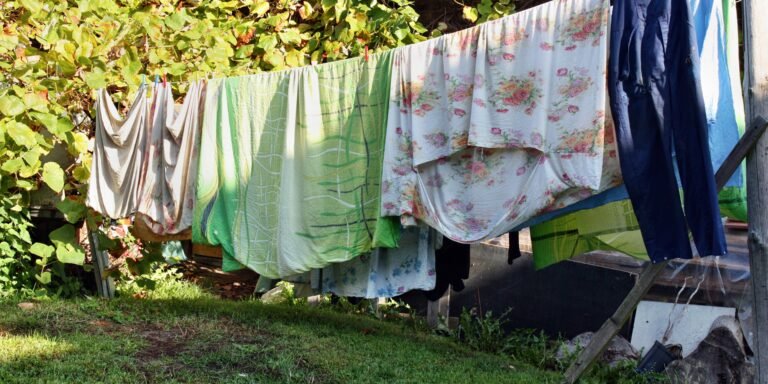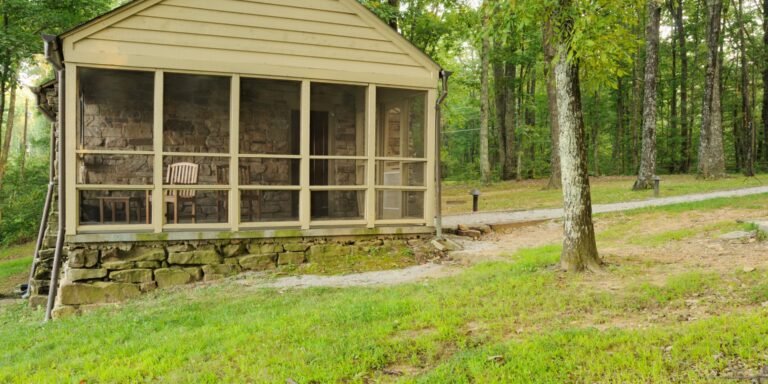18 Things You’ll Need to Prepare for a Winter Power Outage
This post may contain affiliate links, full disclosure here.
Do you ever look at your home in the winter and notice your family all cozy and warm and then you get all sorts of questions pop into your head?
What if the electricity went out? How long could we keep ourselves warm? “How can I prepare for a power loss in the winter (cold weather)?” my inquisitive mind couldn’t help but wonder.
We got a killer ice storm this past year, and if we didn’t have our winter power outage gear prepared, things would have been a lot worse than they were.
Here is what you need to prepare for a power failure in the wintertime, even if you’re not expecting a severe winter storm.
See also: Top 20 Barter Items to Stockpile
How can you survive a winter power outage?
The easiest method to prepare for a winter power loss is to establish a list of everything you’ll need, then devise a strategy and budget to obtain everything you’ll need. It is critical that you have access to water, food, heat, and light.
You’ll also need to make plans and preparations for staying warm, cooking meals, and stockpiling emergency supplies, among other things. Putting together a 72-hour pack with cold weather in mind will effectively prepare you for a winter power loss.
In this post, we’ve compiled a checklist of essential items to have on hand as well as vital points to keep in mind when planning for a winter power outage.
Supplies, Checklist, and Tips for Winter Power Outages
Water
Make sure you have enough drinking water supply for each member of your household to last at least two weeks. Water bottles packages are ideal for this, and the water will last for years if the seals on the bottles are not broken. You can’t always trust your water pipes to work or your hot water heater to produce tap water.
Food
Make sure each family member has enough non-perishable food supplies to last at least two weeks without power.
In the event of a power outage, eat food first from the refrigerator, then the freezer, and finally from storage. If there are still ice crystals in the core of the food, it will last 2 days in a well-insulated freezer. Close the refrigerator and freezer doors as much as possible during winter outages.
If you’re not sure if you stored enough food, here is a guide for you.
See: 11 Essential Canned Foods To Stockpile For Emergencies
Heat
In the event of a power outage, consider using alternate emergency heaters such as Kerosine Heaters, charcoal grills or wood stove as a heating system in low temperatures.
Consider solar panels or a gas generator as a backup power source. You can set up a tent inside the home to keep extra warm and cozy with your family and use each others body heat.
See: How To Heat A Tent Safely In An Emergency Situation
Light
Prepare for a winter weather emergency by stocking your home with enough flashlights for everyone in your family, as well as extra suitable batteries. Getting battery-operated LED lighting to use around the house is also a good idea. Candles can also provide extra light in a severe weather power outage if used carefully.
See: How To Refill A Bic Lighter From The Top In 13 Easy Steps
Medication and Medical Devices
Consult your doctor about a power outage strategy for electrically powered medical devices and refrigerated medications if you have medical conditions.
Find out how long pharmaceuticals may be stored at warmer temperatures and get particular instructions for any life-saving medications in the first aid kit. Needing medical supplies during winter storm power outages can be scary so it’s really important to be prepared.
Portable Battery Banks
Always keep a few portable battery banks on hand to charge your cell phone and other vital electrical devices.
Gas in the Car
Always keep at least half a tank of gas in your car. Electricity is used to power many gas stations’ pumps. While it may seem inconvenient to stop at the gas station more frequently, if your tank is nearly empty during a power outage, you may be unable to go in an emergency.
Keep a full emergency gas tank on hand in case of an emergency.
Portable Camping Stove
Investing in a portable camping stove is a good idea not only for cooking and boiling water while camping but also in case of an emergency. Having a burner to cook on and heat water will be essential during a power outage.
Extra Propane Tank
Storing additional gas tanks for use in a grill, portable burner, or propane heater.
See: Is It Better To Get A Propane Or A Gas Generator
Cash / Money
Have at least one month’s worth of expenses in cash on hand at all times. This should be sufficient to get you through a brief power outage in the cold. However, in the event of a larger-scale catastrophe or financial trouble, you should maintain enough cash to cover three months’ worth of costs.
Extra Batteries
Make sure you have extra batteries that will work with key equipment like radios. They also make great barter items.
Alerts
Register for local alerts and warning systems, and keep an eye on the weather. Storms are expected, so be ready.
Carbon Monoxide Detectors
Install a working carbon monoxide detector with backup batteries in strategic areas throughout your home. You don’t want to get carbon monoxide poisoning from furnaces and gas stoves.
Make a list of all the objects you require that are powered by electricity because you may not be able to access emergency services.
What supplies do you have on hand and what can you add in the event of a power outage?
When the power goes off in the winter, how can I stay warm?
When the power goes out in the winter, you’ll need an alternative heat source, warm (wool) blankets, and thick clothing to stay warm (coats, stocking hats, gloves, etc.). Nonelectric types of heating, such as kerosene space heaters, wood-burning stoves, or a fireplace, should be considered if one is available in your home.
Consider purchasing cold weather/winter sleeping blankets for everyone in your household if the temperature drops below 20°F (-6.6°C). Consider using a backup power source, such as an emergency home generator. Portable generators, which are even smaller, are an excellent source of emergency power. Before purchasing a generator, check the wattage output and think about what you want to be able to power.
- Install storm windows or cover single-pane windows with plastic from the inside to insulate your home. Warm air can also be kept in by using weatherstripping around your doors and window sills.
- Keep additional blankets, sleeping bags, and sweaters on hand in case you need to bundle up.
- Purchase a portable generator if your budget permits it. Learn how to use the generator properly and test it on a regular basis. Remember to keep enough gasoline on hand to keep the generator running for a week.
How can I keep my house warm if I don’t have access to electricity?
- Kerosene Space Heaters
- Wood-burning stoves
- Fireplaces
Kerosene Heaters
Kerosene heaters are an excellent way to keep your home warm when you don’t have access to electricity. They burn cleanly, and newer models offer safety features like shutting off if they’re tipped over, making them safe to use to heat rooms in your house.
Prepare for a winter power loss by using kerosene heaters to keep warm.
You should check out the Sengoku CTN-110 KeroHeat 10,000 BTU Portable Radiant Kerosene Heater on Amazon if you want a less expensive approach to zone heat your home or if you simply need a backup heating solution for power outages during the winter months.
This heater is lightweight and compact, yet despite its modest size, it is a powerful 10,000 BTU heater that can heat larger areas in your home.
The 1.2-gallon fuel tank allows you to use this heater for up to 14 hours before refueling, providing you with convenience when you need it. It comes with a siphon pump so you may empty the tank while moving or storing the heater, as well as four C-sized batteries, which are required for operation.
To check the pricing of this Kerosene Heater on Amazon, go here.
Don’t forget to keep extra Kerosene on hand to keep your heater running for a long time. Kerosene heaters are really handy, but only provided you have enough kerosene to keep them running. On Amazon, you can find Kerosene Fuel.
Staying Safe In A Winter Power Outage
Make sure you’re thinking about safety in everything you do. People have been led to make poor decisions in supplying heat in their houses during power outages, despite the fact that heat is necessary in cold weather. Knowing how to correctly and safely run whichever sort of heater you choose to heat your home during an emergency is important.
- Make certain that everything you’re using is clean and functional.
- Before each storm, test your kerosene heater.
- Every year, have your chimney cleaned and inspected.
- During the winter months, keep dry wood if you want to use a wood-burning stove or fireplace.
- Maintain a three-foot distance between all heat sources and furniture and draperies.
- Make sure everyone in the house knows how to use a fire extinguisher by keeping one on hand.
- Make sure your smoke and carbon monoxide detectors have batteries in them so they can function in the event of a power outage.
Ways To Get Power During A Power Outage
Using a generator, solar panels, personal windmills, or other alternative power sources is the most frequent option to receive power during a power outage in cold temperatures.
Generator
Consider using a generator as a backup power source for electric space heaters and other household appliances. You may set up a transfer switch for a backup generator off of your home’s electrical panel with the help of an electrician for not much more than a couple of hundred dollars of effort. This allows you to connect a generator’s output directly to your home’s electrical panel. The generator will then power everything you want in your home according to its wattage output, and you won’t have to worry about running power cords in via a window or door, allowing valuable heat to leave.
To properly connect power from your generator to your home, make sure you ask the electrician questions and are aware of all recommended practices.
Best Generators for a Power Outage in Winter
Duromax XP12000EH 9,500-Watt Portable Generator
9,500 watts | 18HP 457cc OHV Engine | 8.3 gallon tank | 74 dB | 260 lb
Check out the Duromax on Amazon
This Duromax is one of the most powerful portable generators, with a maximum output of 12,000 watts. It can run on either propane or gas because of its dual-fuel capacity. A 20-pound propane tank with a 50 percent maximum output will last 20 hours, while gasoline with a 50 percent maximum output will last 10 hours. While it features an easy-to-use electric start, it also has a recoil start option.
The heavy-duty metal frame of this generator will keep it safe when used outside in inclement weather, and the power panel has independent breakers for further protection. Even though it’s a large appliance, the solid-fill wheels will make it easier to move around the house. All Duromax generators are also EPA and CARB approved and come with a 3-year warranty.
Champion Dual-Fuel 3800-Watt Portable Generator
3800 watts | 224cc Champion 4-Stroke Engine | 3.4 gallon tank | 68 dB | 119 lb.
On Amazon, you can get a good deal on a Champion Generator.
This generator has lots of power and features to get you through a power outage. With a full tank of propane, it can run for up to 10.5 hours and up to 9 hours on gas. Its cold-start technology improves its ability to start in cold weather, which is particularly handy when the electricity goes out due to snowfall. It has a cast-iron sleeve for added durability, as well as built-in surge protection, oil sensors, a folding handle for storage, and a choice of outlets.
Emergency Food Storage
Consider purchasing a 72-hour Emergency Food Kit that simply requires water to cook. It’s available in packed servings or in bulk. It’s ideal for storms, power outages, natural disasters, and a variety of other situations. When stores are unavailable, having this emergency 72-hour food supply will be life-saving. For on-the-go meals, keep this bucket at home, in an RV, or in a bug-out (leave house swiftly) car. Try the 72-Hour Emergency Kit, Food Supply, Water Filtration, and Fire Starter from Wise Company (Check the price on Amazon). We like the Wise Company’s freeze-dried meals and highly suggest their 72-hour emergency food box.
What do you do if you lose power in the middle of the winter?
It’s just as crucial to prepare your family to withstand a power outage, especially in the winter or cold weather, as it is to schedule some activities for them.
Many people, especially children, have become reliant on cell phones, social media, television, and electronic games. It may be worthwhile to prepare games or activities that do not require the use of devices or access to the internet.
Furthermore, we find it quite rewarding and necessary to assist our neighbors. Consider swapping wool blankets or finding ways to assist neighbors in surviving brief power outages during the winter. Working with local churches and nonprofits is often the most effective way to do this.
Bottom Line When Preparing For A Power Outage In The Winter
It’s critical that you get everything you’ll need to survive a power outage in the dead of winter. Also, make a plan to maintain and update all of the goods or kits you’ve assembled. Food and water do not last indefinitely in storage.
Other items, such as heaters and generators, should be checked to ensure that they are in good working order. It’s crucial to have gas or propane on hand to power heaters, stoves, and other appliances. Make a plan, write it down, review it on a regular basis (set a reminder on your phone), and keep an eye on the weather to prepare for impending storms.







